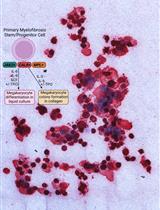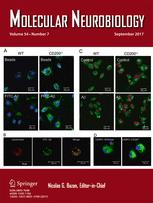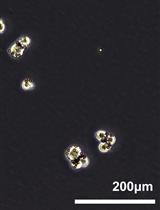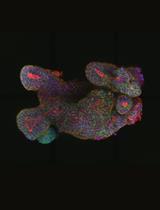- EN - English
- CN - 中文
Primary Cultures from Human GH-secreting or Clinically Non-functioning Pituitary Adenomas
源自人类GH分泌的或临床上无功能的垂体腺瘤的原代培养物
发布: 2018年04月05日第8卷第7期 DOI: 10.21769/BioProtoc.2790 浏览次数: 7458
评审: Oneil G. BhalalaShweta GargJalaj Gupta

相关实验方案

来自骨髓增生性肿瘤患者的造血祖细胞的血小板生成素不依赖性巨核细胞分化
Chloe A. L. Thompson-Peach [...] Daniel Thomas
2023年01月20日 2295 阅读
Abstract
Pituitary adenomas are among the more frequent intracranial tumors usually treated with both surgical and pharmacological–based on somatostatin and dopamine agonists–approaches. Although mostly benign tumors, the occurrence of invasive behaviors is often detected resulting in poorer prognosis. The use of primary cultures from human pituitary adenomas represented a significant advancement in the knowledge of the mechanisms of their development and in the definition of the determinants of their pharmacological sensitivity. Moreover, recent studies identified also in pituitary adenomas putative tumor stem cells representing, according to the current hypothesis, the real cellular targets to eradicate most malignancies. In this protocol, we describe the procedure to establish primary cultures from human pituitary adenomas, and how to select, in vitro expand, and phenotypically characterize putative pituitary adenoma stem cells.
Keywords: Pituitary adenoma (垂体腺瘤)Background
Pituitary adenomas are among the most common intracranial neoplasms (up to 15%) and cross-sectional studies have found a prevalence of around 90 cases per 100,000 inhabitants, with the vast majority being adults over 30 years old. Approximately 10% of unselected pituitaries examined at autopsy (i.e., considering also the pituitaries of subjects without previous diagnosis of pituitary disease) have developed adenomas (Molitch, 2017). Although often benign tumors, the management of pituitary adenomas can be complicated by the clinical syndromes related to hormone hypersecretion, or by the development of aggressive behavior characterized by resistance to treatment, high proliferation rate, rapid recurrence and extrasellar invasion (Carreno et al., 2017). The persistence of stem cells in adult pituitary (Florio, 2011) led to the hypothesis that the development of pituitary adenomas (and possibly of other benign neoplasia) can derive from subpopulations of tumor cells endowed with stem cell properties (mainly self-renewal and differentiation ability), as already established for malignant solid and hematologic tumors.
Recently experimental evidence showed that cancer stem cells (CSC) paradigm also applies to human and mouse pituitary adenomas (Donangelo et al., 2014; Peverelli et al., 2017; Wurth et al., 2017), and it was proposed that oncogenically-transformed CSCs can originate the tumor, clonally. The concept of CSC as tumor-initiating cells (TICs), initially developed for malignant neoplasia, proposes that only a subset of tumor cells, the CSC subpopulations, is responsible of initiating and maintaining tumor growth, causing invasiveness and the formation of metastasis, and conferring drug resistance (Clevers, 2011; Florio and Barbieri, 2012). This theory, leading to a cell hierarchy within a given tumor, replaced the stochastic model of cancerogenesis that proposed the bulk of solid tumors to be composed of cells showing equal tumorigenic potential. A more recent evolution of the CSC model is the ‘dynamic-stemness’ theory, which postulates an interchange between CSCs and more-differentiated (progenitors) cells, determined by epigenetic and microenvironmental signals, transcription factors, miRNAs or the activation of oncogenic pathways (Li and Laterra, 2012).
Besides the relevance from a theoretical point of view, the identification of putative CSCs in pituitary adenomas could represent the basis to identify possible novel pharmacological targets to treat pituitary adenomas, in particular for the more aggressive and poorly responsive subtypes.
Primary cultures from human pituitary adenomas have been used since long to study genetic and pharmacological features of these cells, but the definition of the presence of CSCs within pituitary adenomas raises the issue of their identification and isolation within a non-selected culture, and expansion in vitro to allow genetic, biological and pharmacological studies.
In this protocol, we describe the procedures to establish primary cultures from human pituitary adenomas and to select and expand in vitro putative CSCs (Wurth et al., 2017). Experimental data from their characterization are also reported.
Materials and Reagents
- Aluminum foils (Cogepack, catalog number: 30060A )
- Petri dishes 60 mm (Eppendorf, catalog number: 0030701119 )
- Sterile mono-use scalpel (Paramount Surgimed)
- 15 ml centrifuge tubes (EUROCLONE, catalog number: ET5015B )
- 50 ml centrifuge tubes (EUROCLONE, catalog number: ET5050B )
- 100 µm cell strainer (Corning, Falcon®, catalog number: 352360 )
- 24-well plates (Eppendorf, catalog number: 0030722116 )
- T-25 culture flask (Eppendorf, catalog number: 0030710029 )
- Sterile tips
10 μl PCR clean/sterile (Eppendorf, catalog number: 022491202 )
200 μl PCR clean/sterile (Eppendorf, catalog number: 022491296 )
1,000 μl PCR clean/sterile (Eppendorf, catalog number: 0030077857 ) - Autoclave indicator tape (Arintha Biotech, catalog number: TS1950 )
- LS Columns (Miltenyi Biotec, catalog number: 130-042-401 )
- 8-well Chamber slides (Corning, Falcon®, catalog number: 354118 )
- Coverslip (Menzel-Gläser)
- pH paper
- Membrane filter 0.45 µm (Merck, catalog number: HAWP04700 )
- Sterile phosphate buffered saline (PBS) (EUROCLONE, catalog number: ECB4004L )
- 70% ethanol
- Immune-magnetic sorting (Miltenyi Biotec, catalog number: 130-097-049 )
- Ammonium-Chloride-Potassium (ACK) Lysing Buffer (Lonza, catalog number: 10-548E )
- Anti-Fibroblast MicroBeads, human (Miltenyi Biotec, catalog number: 130-050-601 )
- Normal Goat Serum (NGS) (Sigma-Aldrich, catalog number: G9023 )
- CD133 MicroBead Kit–Tumor Tissue, human (Miltenyi Biotec, catalog number: 130-100-857 )
- CD133, polyclonal rabbit (Abcam, catalog number: ab28364 )
- Notch1 monoclonal mouse (Abcam, catalog number: ab44986 )
- CXCR4 monoclonal mouse (R&D Systems, catalog number: MAB21651 )
- Oct4, polyclonal rabbit (Abcam, catalog number: ab19857 )
- Nestin, polyclonal rabbit (Abcam, catalog number: ab22035 )
- D2R, monoclonal mouse (Santa Cruz Biotechnologies, catalog number: sc-5303 )
- SSTR2A, polyclonal rabbit (Gramsch Laboratories, catalog number: SS-800 )
- AlexaFluor 2nd antibody (488 and 568: Thermo Fisher Scientific, Invitrogen, catalog numbers: A-11008 and A-11004 )
- DAPI (Sigma-Aldrich, catalog number: D9542 )
- TrypLE-express dissociation reagent (Thermo Fisher Scientific, GibcoTM, catalog number: 12605 )
- 0.4% trypan blue solution (Bio-Rad Laboratories, catalog number: 145-0013 )
- Bovine serum albumin (BSA) heat shock fraction, pH 7, ≥ 98% (Sigma-Aldrich, catalog number: A7906 )
- EDTA (CARLO ERBA Reagents, catalog number: 405497 )
- Minimum essential medium (MEM)/HAM’S F12 (1:1, EUROCLONE, catalog numbers: ECB2071L and ECB7502L )
- Fetal bovine serum (FBS, Thermo Fisher Scientific, GibcoTM, catalog number: 10270098 )
- L-glutamine (EUROCLONE, catalog number: BE17-605E )
- Penicillin-streptomycin (EUROCLONE, catalog number: ECB3001D )
- B27 (50x, Thermo Fisher Scientific, GibcoTM, catalog number: 17504044 )
- Leukemia inhibitory factor (LIF, Sigma-Aldrich, catalog number: L5283 )
- bFGF (Miltenyi Biotec, catalog number: 130-093-838 )
- EGF (Miltenyi Biotec, catalog number: 130-093-825 )
- Paraformaldehyde (Thermo Fisher Scientific, Thermo ScientificTM, catalog number: 28908 )
- Sodium hydroxide (NaOH) (Sigma-Aldrich, catalog number: 71687 )
- Glycine (AppliChem, catalog number: A3707 )
- Triton X-100 (VWR, catalog number: 437002A )
- Glycerol (Sigma-Aldrich, catalog number: 77067 )
- Mowiol (Merck, catalog number: 475904 )
- Tris buffer (pH 8.5)
- Buffer for magnetic cell separator (see Recipes)
- Pituitary adenoma stem cell medium (see Recipes)
- Standard pituitary adenoma cell medium (see Recipes)
- Formaldehyde solution (see Recipes)
- 100 mM glycine (see Recipes)
- 0.1% Triton X-100 (see Recipes)
- Mowiol solution (see Recipes)
Equipment
- Surgical scissors and forceps (Exacta Optech, catalog numbers: 6.236 264 and 9.204 222 )
- Autoclave
- Pipettes (10, 200, and 1,000 μl, Eppendorf, catalog numbers: 3123000020 , 3123000055 , and 3123000063 )
- Tissue culture hood (Euroclone, BIOAIR, model: TopSafe 1.8m Class II )
- Water bath (GFL, catalog number: 1083 )
- Centrifuge (Eppendorf, models: 5810 R and 5427 R )
- CO2 incubator (Thermo Fisher Scientific, Thermo ScientificTM, model: 3111 )
- Light microscope (Leica, model: Leica DMIL HC TYPE 090-135.001 )
- MidiMACSTM Separator (Miltenyi Biotec, catalog number: 130-042-302 ) attached to a MultiStand (Miltenyi Biotec, catalog number: 130-042-303 )
- Cell counter (Bio-Rad Laboratories, model: TC20TM )
Software
- Statistic software (i.e., PRISM, GraPhad or similar)
- ImageJ
Procedure
文章信息
版权信息
© 2018 The Authors; exclusive licensee Bio-protocol LLC.
如何引用
Würth, R., Pattarozzi, A., Barbieri, F. and Florio, T. (2018). Primary Cultures from Human GH-secreting or Clinically Non-functioning Pituitary Adenomas. Bio-protocol 8(7): e2790. DOI: 10.21769/BioProtoc.2790.
分类
癌症生物学 > 癌症干细胞 > 细胞生物学试验 > 细胞分离和培养
干细胞 > 成体干细胞 > 癌症干细胞
细胞生物学 > 细胞活力 > 细胞增殖
您对这篇实验方法有问题吗?
在此处发布您的问题,我们将邀请本文作者来回答。同时,我们会将您的问题发布到Bio-protocol Exchange,以便寻求社区成员的帮助。
Share
Bluesky
X
Copy link















